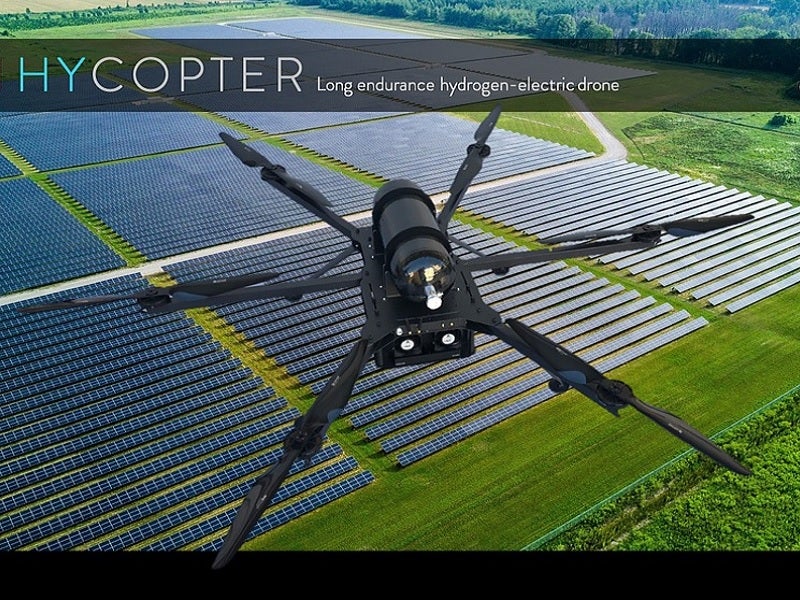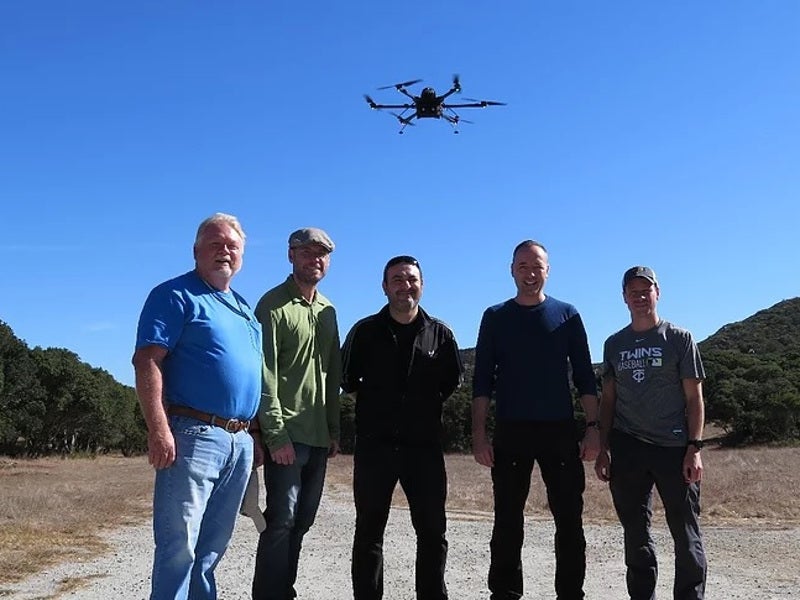Hycopter is a hydrogen-electric unmanned aerial vehicle (UAV) designed and developed by HES Energy Systems, a leading developer of hydrogen fuel cell technology for defence and commercial applications.
Hycopter is the first of its kind hexacopter hydrogen drone intended for persistent reconnaissance and surveillance, as well as large-scale infrastructure inspections. It is also the world’s first hydrogen fuel cell-powered rotary-wing unmanned aircraft system.
The drone was commercially launched for customers in November 2018. It was exhibited at the Intersec 2019 trade fair held in Dubai in January.
The Naval Postgraduate School in Monterey was delivered a Hycopter drone in October 2019. The UAV will support a naval research programme intended to study the feasibility of utilising compressed hydrogen to generate power on naval platforms. It will also complement future research projects associated with long-endurance aerial data gathering.
Hycopter hydrogen-electric UAV design and features
The Hycopter hydrogen-electric vehicle integrates hydrogen fuel cell technology with a cutting-edge UAV platform. The images captured by the Hycopter are linked to h3 Zoom AI, which is an artificial intelligence platform that accelerates the validation and reporting of events.
The vehicle requires two people for deployment and can be deployed within ten minutes. It has an optional feature of accommodating a parachute, which reduces the payload capacity by 550g.
The drone measures 500mm-long and has a wingspan of 1,450mm. Its maximum take-off weight (MTOW) is 15kg.
The UAV can withstand a pressure of 150 bar and can be operated in extreme temperatures ranging between -5° and 45°. It has a pitch and yaw of 250°/s and 100°/s respectively, with the maximum tilt angle being 32°. It can survive wind speeds up to 32km/h.
Payloads of Hycopter hydrogen-electric UAV
Hycopter hydrogen-electric unmanned vehicle supports the integration of multiple payloads. The system accommodates open payload bay for a variety of cameras and sensors, which allows it to deliver real-time information for optimising tactical field operations.
The payload bay measures 260mm-long, 330mm-wide and 200mm-high, while the maximum payload carrying capacity of the vehicle is 2.5kg.
The Hycopter hydrogen-electric UAV also comes with an optional payload power supply of up to 150W. The open payload bay also includes 5V-32V payload voltages.
Navigation and control
Navigation and real-time positioning for the Hycopter UAV is supported by the onboard global positioning system (GPS). The vertical accuracy is 0.5m (1.64ft), while the horizontal accuracy is 2.5m (8.2ft).
The use of telemetry and flight planning software helps the drone determine its flight altitude and flight speed. An optional first-person view (FPV) camera system further ensures the operator to detect the position of the drone and monitor its surroundings.
The Pixhawk 2 flight controller detects changes in the orientation of the drone. The UAV is operated using a controlling device with joystick radio. The remote control device ensures operations within a maximum line of sight range of 3km.
Propulsion and performance
Hycopter hydrogen-electric unmanned vehicle is equipped with a fuel-cell using hydrogen in a compressed gas-hydrogen cylinder. It comes with three different cylinders with 5l, 9l, or 12l storage capacities.
The nominal power of the fuel cell is 1,500W, while the Li-Po battery delivers a peak power of 4,000W for less than ten seconds.
The drone can continuously perform operations up to 3.5 hours at a speed of 56km/h. Its maximum ascent and descent speeds are 3.2m/s and 2.2m/s, respectively.






